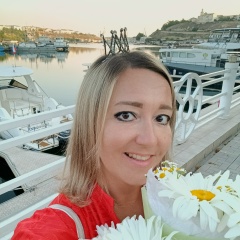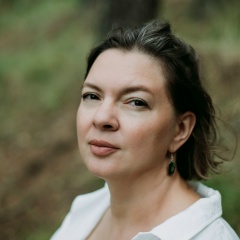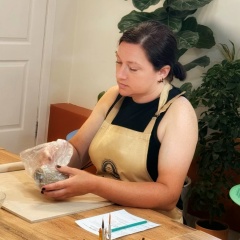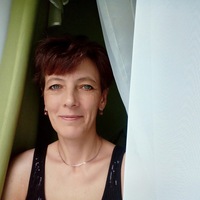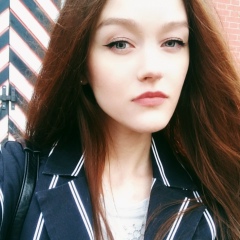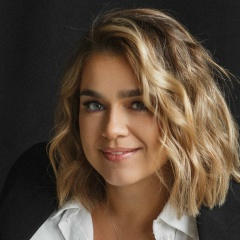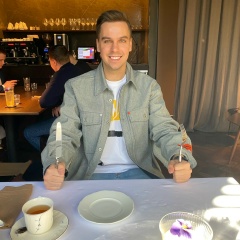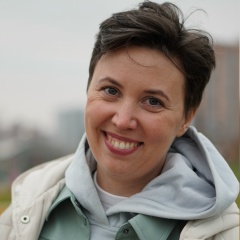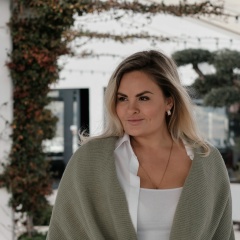Вот уже неделю в нашем детском саду работает гало-сенсорный комплекс.
Он представляет собой две комнаты, в которых дети как оздоравливаются, так и развиваются. Создавая его, мы преследовали такие цели:
- психоэмоциональная разгрузка, а так же профилактика эмоционального перенапряжения, как для воспитанников, так и для сотрудников детского сада;
- полноценное комплексное сенсорное развитие детей: стимуляция зрительного, аудиального и кинестетического анализаторов, как попеременно, так и одновременно;
- комплексное развитие познавательных процессов у детей: внимания, памяти, воображения, мышления, воли, речи;
- развитие эмоционального интеллекта: на фоне положительных эмоций поддержка эмоции интереса и удивления, а так же снятие тревожности, агрессии, страхов и др.;
- формирование и развитие коммуникативных навыков: терпения, умения договариваться, уступать, лидерских качеств и др.;
- развитие мелкой моторики рук при взаимодействии с солью и песком, а так же стимуляция активных точек на стопах при посещении «соляной пещеры» в носочках.
«Соляная пещера» – очень стильная и красивая комната. Попадая туда, дети ощущают себя в волшебном мире, где все светится, переливается, так легко дышится и можно с удовольствием расслабиться. Занятия, которые проводятся там при непосредственном участии медицинских работников сада, под их чутким руководством и строгим контролем, носят физкультурно-оздоровительный характер. В этой комнате дети занимаются дыхательной гимнастикой, релаксацией и в свободной игре дышат полезным «соленым» воздухом.
Вторая комната – «Песочная страна». Это то место, где детская фантазия – главный действующий персонаж, созидание – главное правило, а коммуникация – главная цель. В этой комнате дети вместе с психологом занимаются арт-терапией и песочной терапией.
Арт-терапевтические методы обладают огромными психодиагностическими, коррекционными, развивающими, релаксационными и профилактическими возможностями. Благодаря использованию этих методов психологу удается установить контакт, получить и донести информацию даже во взаимодействии с неговорящими, тревожными, гиперактивными детьми. Кроме того, результаты работы (детские рисунки, поделки, фотографии процесса песочной терапии) позволяют наглядно увидеть особенности ребенка родителям и воспитателям, осознать и спланировать способы дальнейшего взаимодействия с ребенком, требующим помощи и внимания. Занятия проводятся в мини-группах или индивидуально.
Методы песочной терапии позволяют через манипуляции с песком и игрушками отработать сложные ситуации, о которых ребенку сложно говорить и которые часто им даже не осознаются. Так же в песочной терапии очень значим развивающий компонент: в игровой форме ребенок может знакомиться с явлениями окружающего мира, узнавать животных и птиц, наглядно воспринимать чувства и эмоции, учиться считать и многое другое.
Рисование, лепка и иные виды творчества ориентированы не на эстетический результат, а на освобождение от эмоций, которые не позволяют полноценно развиваться, влияют на поведение и часто становятся причиной психосоматических заболеваний.
Так, арт-терапевтические методы позволяют комплексно решать задачи, стоящие перед педагогическим коллективом детского сада, а созданные для этого условия (интерактивная песочница, сенсорная комната) делают этот процесс реальным и эффективным.
Главной достопримечательностью этой комнаты является интерактивная песочница. Множество разнообразных режимов делает каждое занятие увлекательным и ярким, отличным от других. Дети с трепетом ждут соприкосновения с песком, который так легко, как по мановению волшебной палочки, меняет свою окраску, свой фон, и становится динамичным.
Главные люди в детском саду – это дети. И в нашем саду мы день за днем стараемся создавать такие условия, в которых они могли бы гармонично развиваться, сохранять свое здоровье и раскрывать таланты. Здесь каждый день ребенок получает новые эмоции и опыт. Мы стараемся для них!
Он представляет собой две комнаты, в которых дети как оздоравливаются, так и развиваются. Создавая его, мы преследовали такие цели:
- психоэмоциональная разгрузка, а так же профилактика эмоционального перенапряжения, как для воспитанников, так и для сотрудников детского сада;
- полноценное комплексное сенсорное развитие детей: стимуляция зрительного, аудиального и кинестетического анализаторов, как попеременно, так и одновременно;
- комплексное развитие познавательных процессов у детей: внимания, памяти, воображения, мышления, воли, речи;
- развитие эмоционального интеллекта: на фоне положительных эмоций поддержка эмоции интереса и удивления, а так же снятие тревожности, агрессии, страхов и др.;
- формирование и развитие коммуникативных навыков: терпения, умения договариваться, уступать, лидерских качеств и др.;
- развитие мелкой моторики рук при взаимодействии с солью и песком, а так же стимуляция активных точек на стопах при посещении «соляной пещеры» в носочках.
«Соляная пещера» – очень стильная и красивая комната. Попадая туда, дети ощущают себя в волшебном мире, где все светится, переливается, так легко дышится и можно с удовольствием расслабиться. Занятия, которые проводятся там при непосредственном участии медицинских работников сада, под их чутким руководством и строгим контролем, носят физкультурно-оздоровительный характер. В этой комнате дети занимаются дыхательной гимнастикой, релаксацией и в свободной игре дышат полезным «соленым» воздухом.
Вторая комната – «Песочная страна». Это то место, где детская фантазия – главный действующий персонаж, созидание – главное правило, а коммуникация – главная цель. В этой комнате дети вместе с психологом занимаются арт-терапией и песочной терапией.
Арт-терапевтические методы обладают огромными психодиагностическими, коррекционными, развивающими, релаксационными и профилактическими возможностями. Благодаря использованию этих методов психологу удается установить контакт, получить и донести информацию даже во взаимодействии с неговорящими, тревожными, гиперактивными детьми. Кроме того, результаты работы (детские рисунки, поделки, фотографии процесса песочной терапии) позволяют наглядно увидеть особенности ребенка родителям и воспитателям, осознать и спланировать способы дальнейшего взаимодействия с ребенком, требующим помощи и внимания. Занятия проводятся в мини-группах или индивидуально.
Методы песочной терапии позволяют через манипуляции с песком и игрушками отработать сложные ситуации, о которых ребенку сложно говорить и которые часто им даже не осознаются. Так же в песочной терапии очень значим развивающий компонент: в игровой форме ребенок может знакомиться с явлениями окружающего мира, узнавать животных и птиц, наглядно воспринимать чувства и эмоции, учиться считать и многое другое.
Рисование, лепка и иные виды творчества ориентированы не на эстетический результат, а на освобождение от эмоций, которые не позволяют полноценно развиваться, влияют на поведение и часто становятся причиной психосоматических заболеваний.
Так, арт-терапевтические методы позволяют комплексно решать задачи, стоящие перед педагогическим коллективом детского сада, а созданные для этого условия (интерактивная песочница, сенсорная комната) делают этот процесс реальным и эффективным.
Главной достопримечательностью этой комнаты является интерактивная песочница. Множество разнообразных режимов делает каждое занятие увлекательным и ярким, отличным от других. Дети с трепетом ждут соприкосновения с песком, который так легко, как по мановению волшебной палочки, меняет свою окраску, свой фон, и становится динамичным.
Главные люди в детском саду – это дети. И в нашем саду мы день за днем стараемся создавать такие условия, в которых они могли бы гармонично развиваться, сохранять свое здоровье и раскрывать таланты. Здесь каждый день ребенок получает новые эмоции и опыт. Мы стараемся для них!
For a week now, a halo-sensory complex has been working in our kindergarten.
It consists of two rooms in which children both recover and develop. Creating it, we pursued the following goals:
- psycho-emotional discharge, as well as the prevention of emotional overstrain, both for pupils and for kindergarten employees;
- full-fledged integrated sensory development of children: stimulation of visual, auditory and kinesthetic analyzers, both alternately and simultaneously;
- the integrated development of cognitive processes in children: attention, memory, imagination, thinking, will, speech;
- development of emotional intelligence: against the background of positive emotions, support for emotions of interest and surprise, as well as the removal of anxiety, aggression, fears, etc .;
- the formation and development of communication skills: patience, ability to negotiate, give in, leadership qualities, etc .;
- the development of fine motor skills of the hands when interacting with salt and sand, as well as the stimulation of active points on the feet when visiting the "salt cave" in the socks.
Salt Cave is a very stylish and beautiful room. Once there, the children feel themselves in a magical world where everything glows, shimmers, breathes so easily and you can relax with pleasure. Classes that are held there with the direct participation of medical workers of the garden, under their strict guidance and strict control, are of a fitness and health nature. In this room, children are engaged in breathing exercises, relaxation and in a free game breathe healthy “salty” air.
The second room is Sand Country. This is the place where children's imagination is the main character, creation is the main rule, and communication is the main goal. In this room, children, together with a psychologist, are engaged in art therapy and sand therapy.
Art-therapeutic methods have tremendous psychodiagnostic, corrective, developmental, relaxation and preventive opportunities. Through the use of these methods, the psychologist is able to establish contact, receive and convey information even in interaction with non-speaking, anxious, hyperactive children. In addition, the results of the work (children's drawings, crafts, photographs of the sand therapy process) allow you to visually see the characteristics of the child to parents and carers, to recognize and plan ways of further interaction with the child, requiring help and attention. Classes are held in mini-groups or individually.
Sand therapy methods allow you to work out difficult situations through manipulations with sand and toys that are difficult for the child to talk about and which they often are not even aware of. The developmental component is also very significant in sand therapy: in a playful way, a child can get acquainted with the phenomena of the world, recognize animals and birds, visually perceive feelings and emotions, learn to count and much more.
Drawing, modeling and other types of creativity are focused not on an aesthetic result, but on liberation from emotions that do not allow full development, affect behavior and often cause psychosomatic diseases.
So, art-therapeutic methods make it possible to comprehensively solve the tasks facing the teaching staff of the kindergarten, and the conditions created for this (interactive sandbox, sensory room) make this process real and effective.
The main attraction of this room is the interactive sandbox. A lot of different modes makes each lesson exciting and vibrant, different from the others. Children with trepidation await contact with the sand, which as easily as if by magic, changes its color, its background, and becomes dynamic.
The main people in kindergarten are children. And in our garden, day after day, we try to create conditions in which they could develop harmoniously, maintain their health and reveal talents. Here every day the child receives new emotions and experience. We are trying for them!
It consists of two rooms in which children both recover and develop. Creating it, we pursued the following goals:
- psycho-emotional discharge, as well as the prevention of emotional overstrain, both for pupils and for kindergarten employees;
- full-fledged integrated sensory development of children: stimulation of visual, auditory and kinesthetic analyzers, both alternately and simultaneously;
- the integrated development of cognitive processes in children: attention, memory, imagination, thinking, will, speech;
- development of emotional intelligence: against the background of positive emotions, support for emotions of interest and surprise, as well as the removal of anxiety, aggression, fears, etc .;
- the formation and development of communication skills: patience, ability to negotiate, give in, leadership qualities, etc .;
- the development of fine motor skills of the hands when interacting with salt and sand, as well as the stimulation of active points on the feet when visiting the "salt cave" in the socks.
Salt Cave is a very stylish and beautiful room. Once there, the children feel themselves in a magical world where everything glows, shimmers, breathes so easily and you can relax with pleasure. Classes that are held there with the direct participation of medical workers of the garden, under their strict guidance and strict control, are of a fitness and health nature. In this room, children are engaged in breathing exercises, relaxation and in a free game breathe healthy “salty” air.
The second room is Sand Country. This is the place where children's imagination is the main character, creation is the main rule, and communication is the main goal. In this room, children, together with a psychologist, are engaged in art therapy and sand therapy.
Art-therapeutic methods have tremendous psychodiagnostic, corrective, developmental, relaxation and preventive opportunities. Through the use of these methods, the psychologist is able to establish contact, receive and convey information even in interaction with non-speaking, anxious, hyperactive children. In addition, the results of the work (children's drawings, crafts, photographs of the sand therapy process) allow you to visually see the characteristics of the child to parents and carers, to recognize and plan ways of further interaction with the child, requiring help and attention. Classes are held in mini-groups or individually.
Sand therapy methods allow you to work out difficult situations through manipulations with sand and toys that are difficult for the child to talk about and which they often are not even aware of. The developmental component is also very significant in sand therapy: in a playful way, a child can get acquainted with the phenomena of the world, recognize animals and birds, visually perceive feelings and emotions, learn to count and much more.
Drawing, modeling and other types of creativity are focused not on an aesthetic result, but on liberation from emotions that do not allow full development, affect behavior and often cause psychosomatic diseases.
So, art-therapeutic methods make it possible to comprehensively solve the tasks facing the teaching staff of the kindergarten, and the conditions created for this (interactive sandbox, sensory room) make this process real and effective.
The main attraction of this room is the interactive sandbox. A lot of different modes makes each lesson exciting and vibrant, different from the others. Children with trepidation await contact with the sand, which as easily as if by magic, changes its color, its background, and becomes dynamic.
The main people in kindergarten are children. And in our garden, day after day, we try to create conditions in which they could develop harmoniously, maintain their health and reveal talents. Here every day the child receives new emotions and experience. We are trying for them!




У записи 31 лайков,
1 репостов,
639 просмотров.
1 репостов,
639 просмотров.
Эту запись оставил(а) на своей стене Ксения Курзова





